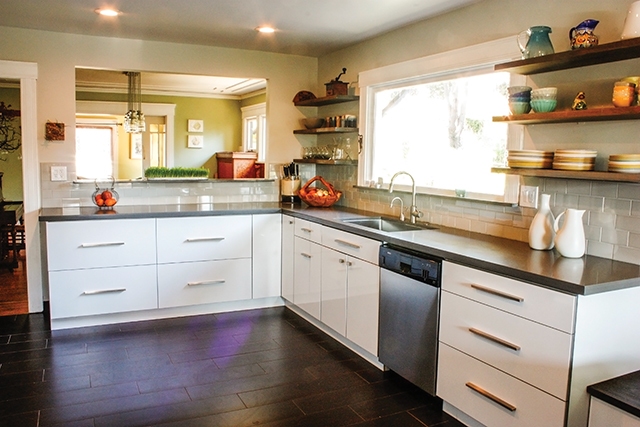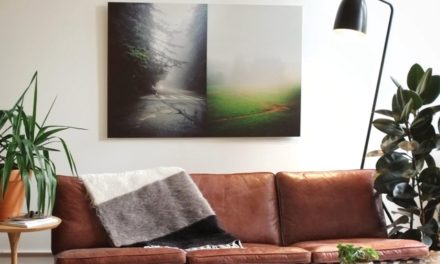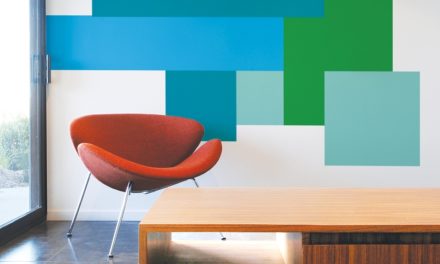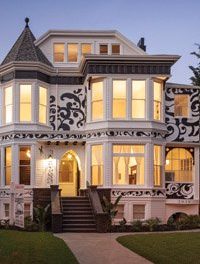Neat open cabinets add touches of austerity and orderliness to a modern kitchen.
If you’re ready to show off your prized Fiestaware, get rid of the stuff you never use, and don’t mind dusting, open shelving could be right for you.
Many of us jump into January ready to tackle the big stuff: toning our bodies and clearing out our minds — and our homes. If you’re ready to take a good hard look at what’s in your kitchen cabinets — and relieve that persistent fear that something’s going to fall on your head next time you open the cupboard door — consider what’s hot these days in kitchen redesign: open cabinetry.
Can you live without cupboard doors? Are you ready to show off your prized Fiestaware and store or recycle the stuff you never use? Elyse Hochstadt, owner and designer at Oakland’s Paragon Kitchen & Bath Studio, has some suggestions on how to approach open shelving.
“The obvious advantage of doors is that you keep dust and dirt off whatever you have inside,” Hochstadt said. “But open shelving has become very much a designer aspect of kitchen renovations for more open-looking and modern spaces. It’s an opportunity to put in an accent color, so if you’re doing, for example, a white kitchen, you could put in a wood shelf, and that would add some warmth and dimension to a space that didn’t have it. Also, it feels less boxy and more open, and you have an opportunity to show off your dishware if you have something really pretty.”
Open shelving also helps with accessibility: “There are no swinging doors to deal with anymore.” Attractive words to this owner of a cramped galley kitchen.
Hochstadt reported that she’s seeing a lot more requests for open shelving than she has previously. But what do you need to consider to take the leap? “I think it really depends on who’s living in the space,” Hochstadt said. “For a home with a lot of little kids, it depends on the attitude the parents have. Do they want the kids trying to reach something? Could something get broken? Also, you don’t want the shelving pulled on. It’s a little more vulnerable than an actual cabinet. But it’s a pretty look.
“I think homeowners want to think about if this look is appropriate for their home and space. If you have a super traditional French provincial home, does open shelving make sense? And if it does, what would it look like? It might not be the kind of shelves we’re seeing in a lot of magazine articles. Maybe instead, you need a painted shelf with decorative flourishes and brackets. But if you have a home that can take a modern look, then the things to think about are, ‘Is this right for my lifestyle? What about the dusting and the cleaning?’ That’s the major consideration.”
Hochstadt said any house style can be a great candidate for open shelving; it just depends on how you address it. “In a farmhouse, you’re looking at a more rustic wood, less finish, irregular, maybe blockier and thicker. For a midcentury modern home, you’re looking at something quite refined, such as walnut. In a farmhouse, a bracket or corbel would be OK, but in midcentury modern, you’d want it as clean as possible. You don’t want to see any hardware or anything holding it up. You want it to look like it’s levitating for a cleaner look.”
To help you figure out what your kitchen might look like, Hochstadt recommends homeowners go to a professional and have the pro do some drawings. Whether you’re interested in just the open shelving or an entire kitchen remodel, “professionals can work with you to address where everything else will go.”
Check out Hochstadt’s open-shelving look on her Houzz page, and get your kitchen off to a clean, fresh start.
















